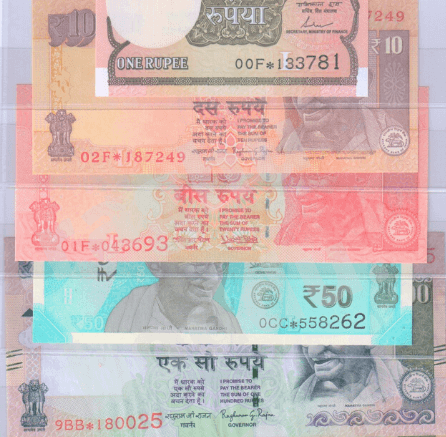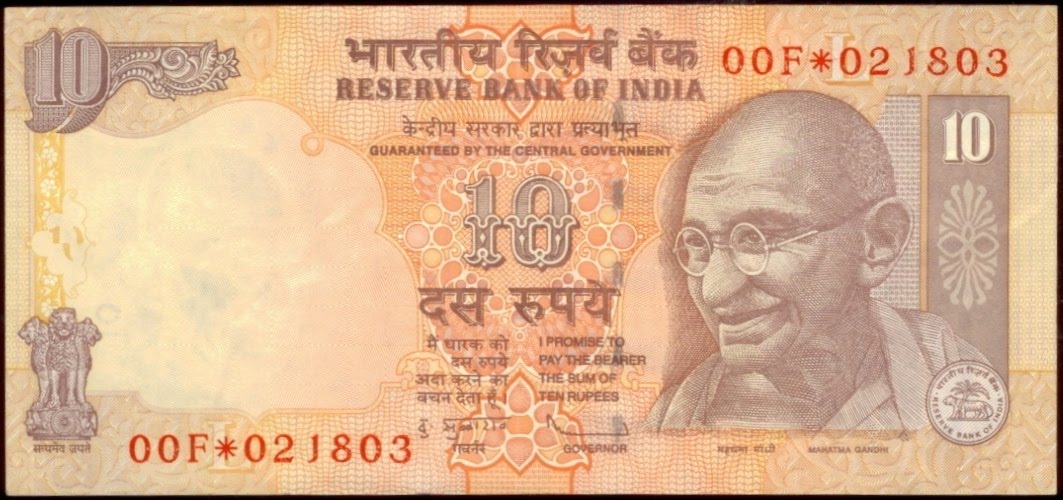RBI Shatters Misconceptions: “Star Series” Banknotes Are Regular Notes

RBI Shatters Misconceptions: “Star Series” Banknotes Are Regular Notes
Lately, there has been a lot of talk on social media and messaging apps about special “Star Series” banknotes in India. But the Reserve Bank of India (RBI) has stepped in to set the record straight. These “Star Series” banknotes are not unique or more valuable than regular notes – they are simply part of the normal currency-making process.

Let’s get to the bottom of it: “Star Series” banknotes are replacements made when regular banknotes get damaged while being printed. The word “Star Series” comes from the star (*) that is marked on these damaged notes. It helps the RBI and banks identify them so they won’t get mixed up with the good notes during transactions.
The Story Behind “Star Series” Banknotes
It is quite common for rumors and misconceptions to spread rapidly in this age of instant communication, and the case of the “Star Series” banknotes is no exception. The allure of owning something rare or special has fueled the interest in these banknotes, leading people to believe they are unique and hold a hidden value. But the truth is far less exciting – “Star Series” banknotes are born out of a practical necessity rather than any extraordinary significance.
During the printing process of currency notes, errors and damages can occur. These errors might include smudged ink, creases, or misalignments during the printing process. When such issues are detected, these notes are deemed unfit for circulation, and the RBI replaces them with “Star Series” banknotes. The star (*) symbol is added to these replacement notes to differentiate them from the regular ones and to prevent any confusion in the banking system.
The use of replacement banknotes is not unique to India. Many countries have similar practices in place to ensure the integrity of their currency. These replacement notes are a standard part of the currency production process and are not limited to specific denominations. They can be found across various denominations, from low-value denominations like ₹10 to higher ones like ₹2,000.

In an effort to educate the public about the true nature of these banknotes, the RBI has also been emphasizing the importance of financial literacy. Understanding how currency is produced and circulated can help people avoid falling for misleading information and prevent them from being victims of scams or hoaxes.
The proliferation of misinformation can have tangible consequences for individuals and the economy as a whole. The inflated demand for “Star Series” banknotes, driven by the mistaken belief in their rarity, has led to a distortion in the currency market. As people hoard these notes, the circulation of regular banknotes is affected, causing potential cash shortages and inconvenience during everyday transactions.
Moreover, illegal activities like hoarding and trading “Star Series” banknotes for inflated prices can also contribute to the black market and further distort the financial system. The RBI’s warning against such practices is not just a matter of preserving the integrity of the currency but also safeguarding the overall financial stability of the nation.
As the RBI’s clarification spreads, it is expected that the demand for “Star Series” banknotes will gradually normalize, and people will become more conscious of seeking information from verified sources. This episode serves as a valuable lesson for society in the age of rapid digital communication, where misinformation can spread like wildfire.
It’s important to know that “Star Series” banknotes are nothing new; they have been around for a while. Unfortunately, due to false information on social media, many people have started believing these banknotes are worth more than they really are. This misunderstanding has led to more demand for them in the market.
To clear things up, the RBI issued a statement saying that all banknotes, whether they have a star symbol or not, are worth the same and are valid for the full amount shown on them. Hoarding or trading these banknotes at higher prices is illegal, and the RBI will take strict action against anyone caught doing it.

Misinformation spreads quickly these days, and it can cause harm to people’s finances and the economy. The RBI wants everyone to rely on verified information from official sources and not fall for rumors.
The RBI is also using this opportunity to teach the public about the security features in Indian banknotes. These features, like watermarks, security threads, and color-changing inks, help us identify real banknotes and avoid counterfeit ones. Being careful and checking for these features will keep our money safe.
In conclusion, the “Star Series” banknotes, with their star (*) symbol, have been misunderstood and exaggerated in value due to rampant misinformation on social media. These replacement notes are a regular part of the currency printing process, not rare or more valuable than standard banknotes. The RBI’s clarification serves as a reminder of the importance of financial literacy and critical thinking in a world inundated with information.
By staying informed through credible sources and using official channels, we can avoid falling into the traps of rumors and protect ourselves from potential financial pitfalls. Let us foster a society that values accurate knowledge and sound financial practices, ensuring a stable and reliable economic future for all.




